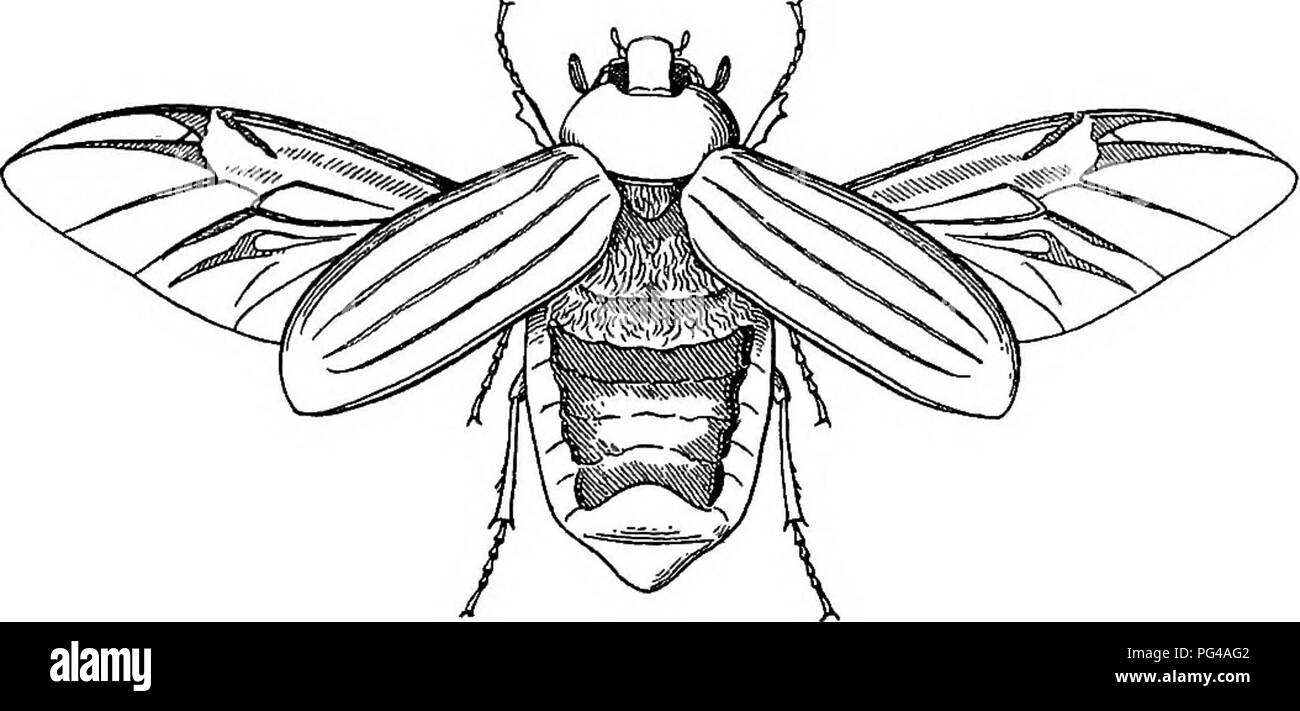. Injurious and useful insects; an introduction to the study of economic entomology. Insects; Beneficial insects; Insect pests. THE COCKCHAFER 27 of the abdomen can be examined; they are eight in number. The feelers are plainly visible upon the head; each is ten- jointed. The terminal joints are prolonged on one side so as to form leaflets, which are capable of being separated or closed. The "club " of the male cockchafer contains seven such leaf- lets, while that of the female has only six. Turn the cockchafer over, and examine the under-side. We now see the jaws, which will be more

Image details
Contributor:
Central Historic Books / Alamy Stock PhotoImage ID:
PG4AG2File size:
7.1 MB (266.1 KB Compressed download)Releases:
Model - no | Property - noDo I need a release?Dimensions:
2286 x 1093 px | 38.7 x 18.5 cm | 15.2 x 7.3 inches | 150dpiMore information:
This image is a public domain image, which means either that copyright has expired in the image or the copyright holder has waived their copyright. Alamy charges you a fee for access to the high resolution copy of the image.
This image could have imperfections as it’s either historical or reportage.
. Injurious and useful insects; an introduction to the study of economic entomology. Insects; Beneficial insects; Insect pests. THE COCKCHAFER 27 of the abdomen can be examined; they are eight in number. The feelers are plainly visible upon the head; each is ten- jointed. The terminal joints are prolonged on one side so as to form leaflets, which are capable of being separated or closed. The "club " of the male cockchafer contains seven such leaf- lets, while that of the female has only six. Turn the cockchafer over, and examine the under-side. We now see the jaws, which will be more particularly described later on. The under-side of the prothorax exhibits a narrow prosternum, flanked by two sockets for the fore-legs. Pull out. Fig. 20. Female cockchafer with expanded wings. X ^. one fore-leg, and remark that the socket is " closed "—i.e. sur- rounded by the prothorax on all sides. The mesosternum is short, wide from side to side, and undivided; the sockets for the intermediate legs lie between it and the metasternum. This last is a much larger plate, marked by a median groove, which indicates that it represents paired elements; the sockets of the hind limb hardly indent it, but occupy slits lying between it and the first abdominal sternum. Six abdominal sterna are easily counted; the first is very slender, and hidden by the hind leg, so that it may easily be overlooked. The terga do not come opposite the sterna, but alternate with them, and while there are eight terga externally visible, there are only seven sterna, of which the first is insignificant in size. This inequality is partly due to the squeezing-in of the bases of. Please note that these images are extracted from scanned page images that may have been digitally enhanced for readability - coloration and appearance of these illustrations may not perfectly resemble the original work.. Miall, Louis Compton, 1842-. London, G. Bell & sons